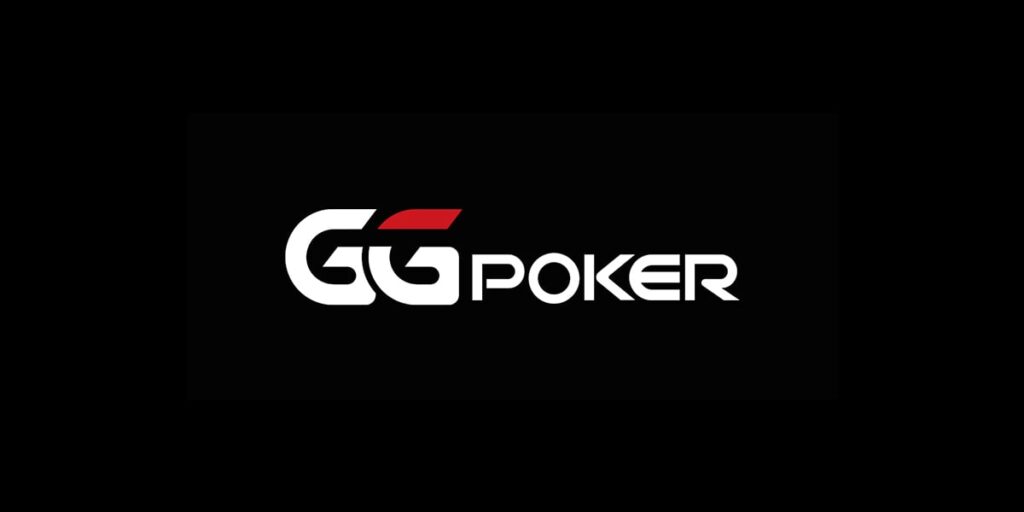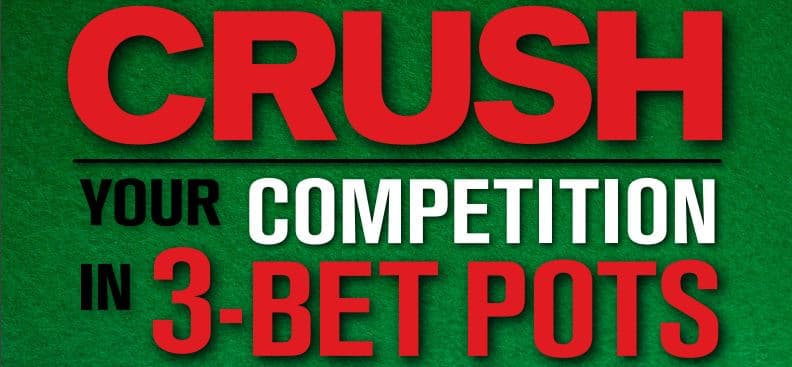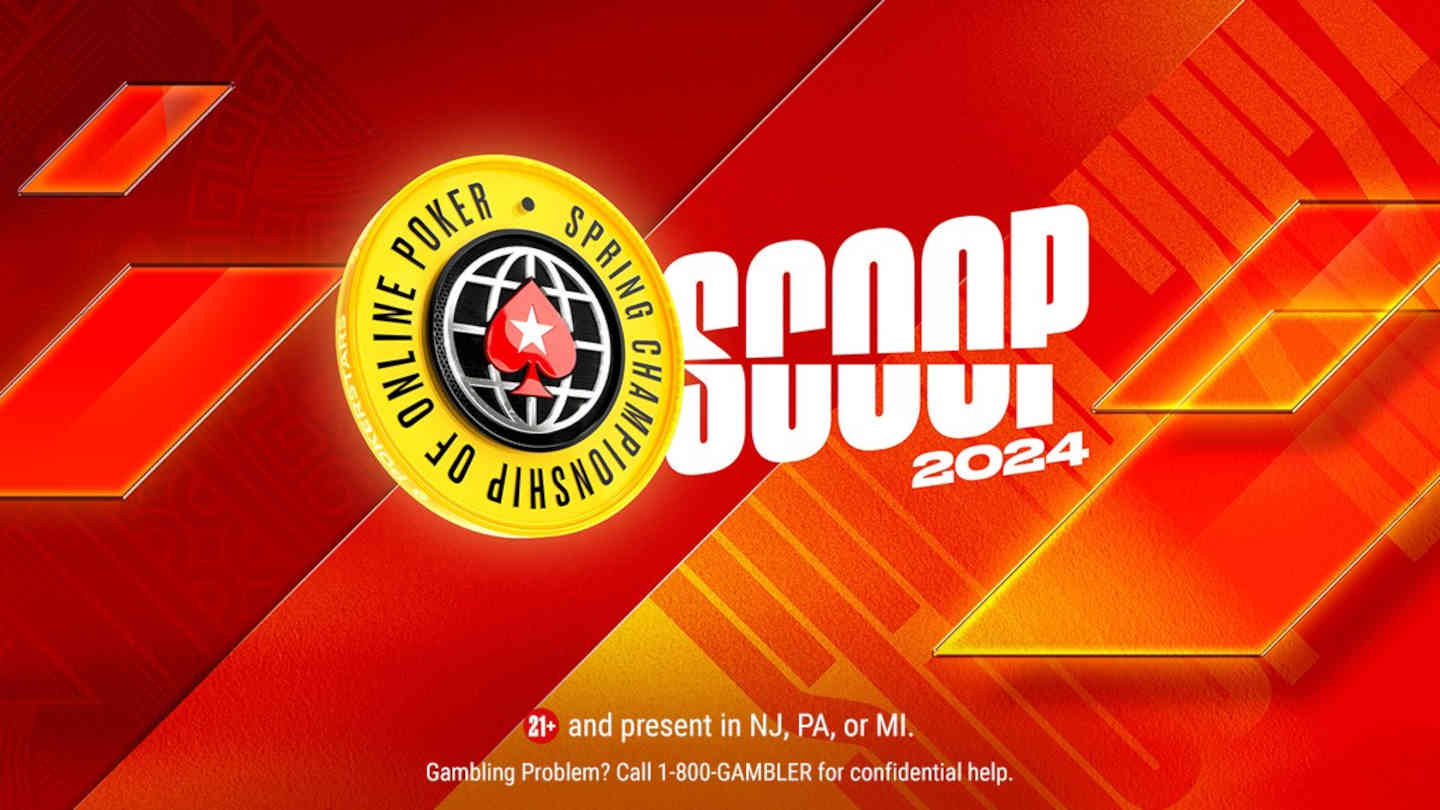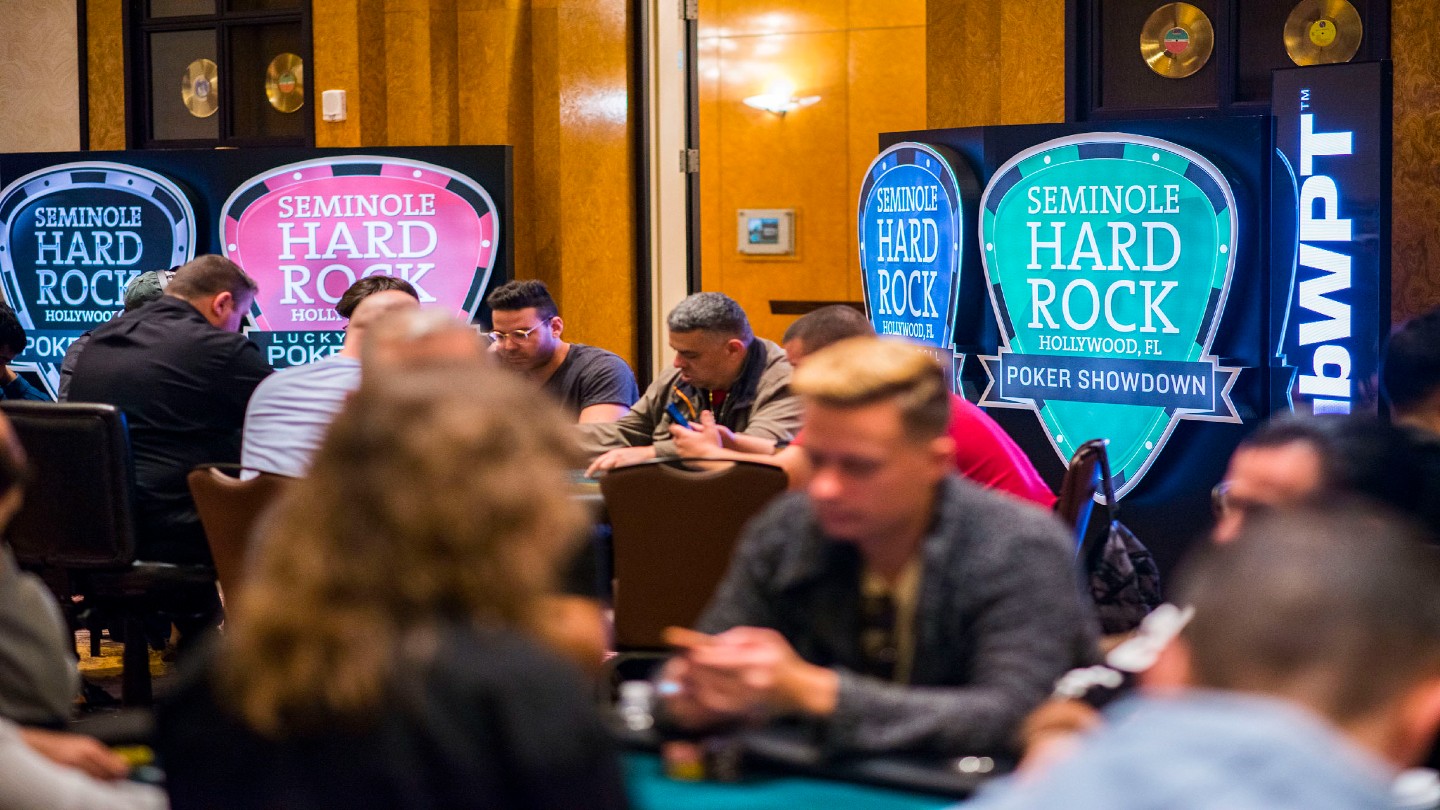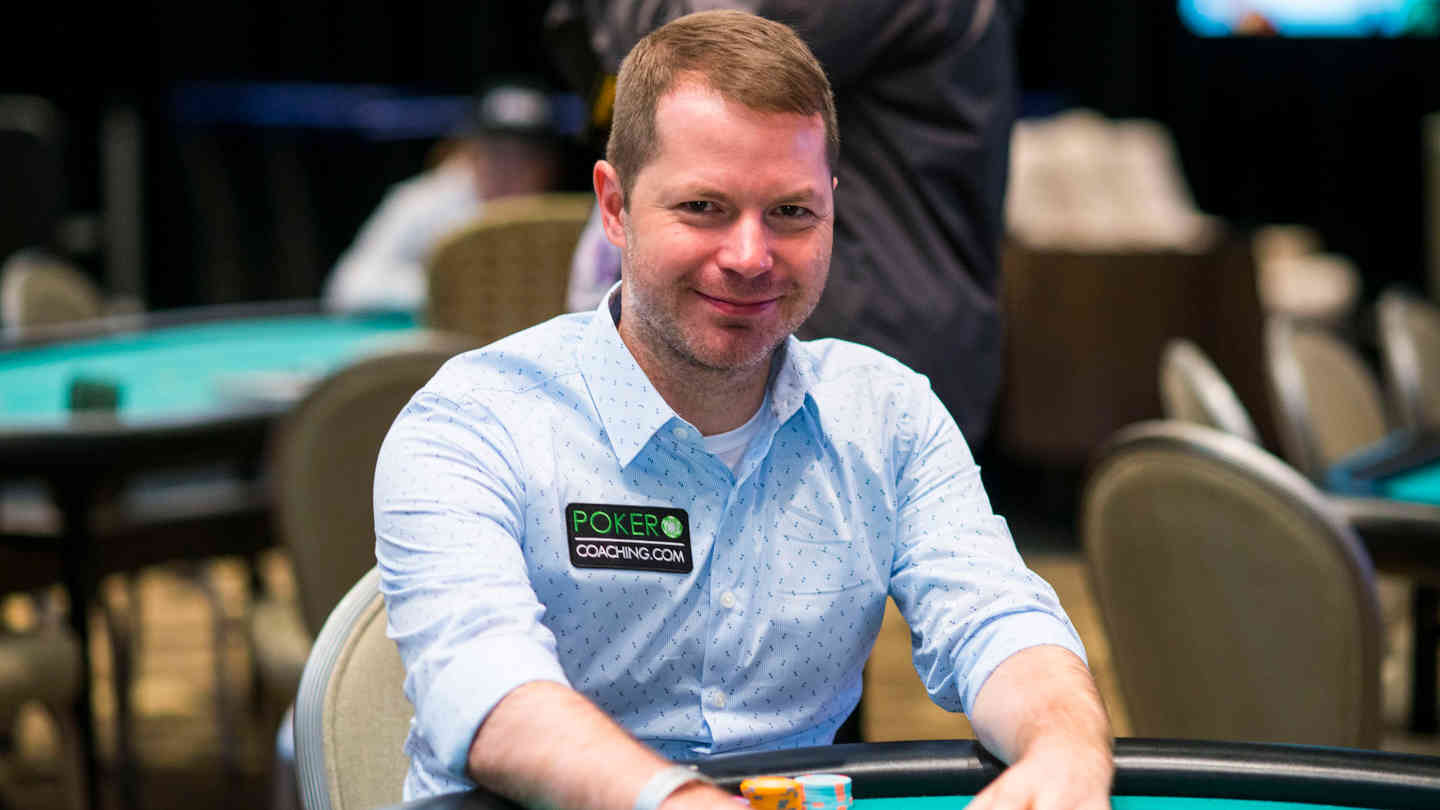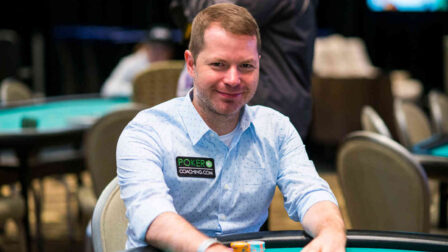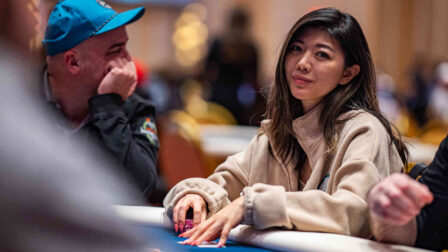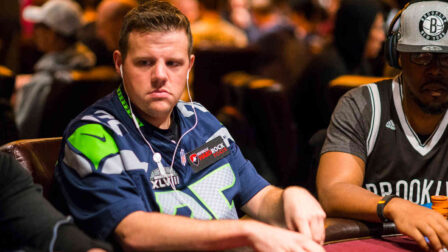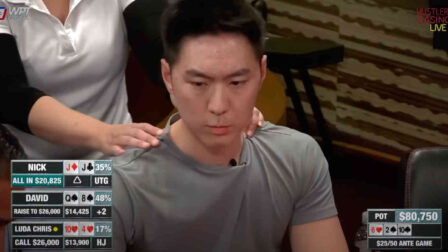Poker Cheat Sheet For You – The Best Way To Learn Poker Basics In 2024
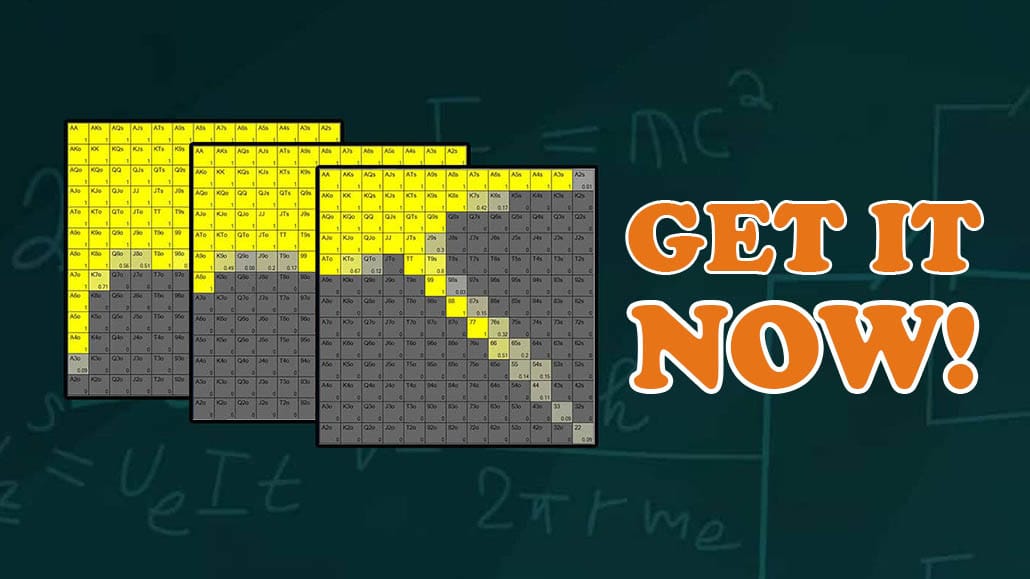
31 minutes
Last Updated: January 16, 2024
I WILL TELL YOU A SECRET, EVERY POKER PLAYER USES A CHEAT SHEET, BE IT IN HIS HEAD OR WRITTEN ON A PIECE OF PAPER.
If you are looking for poker hand rankings, below you will find an immediate poker cheat sheet for that. Moreover, if you are looking for actionable strategies that will help you win in your games, keep scrolling to get additional Texas Hold'em cheat sheets and tips.
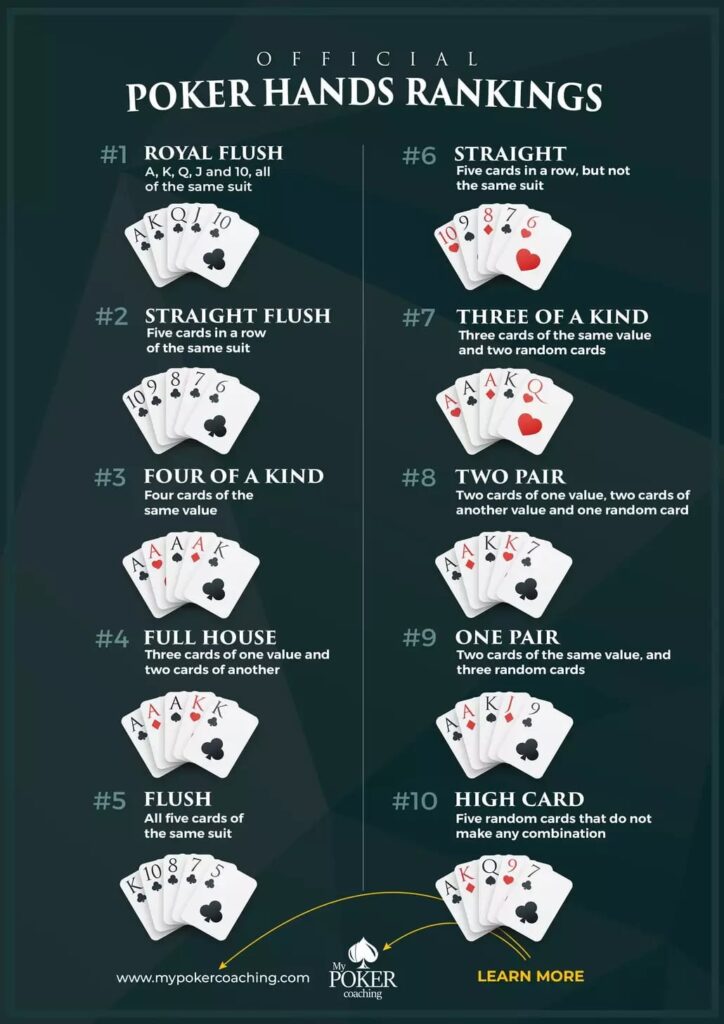
Download Poker Hand Rankings Cheat Sheet PDF
On the other hand, if you are looking to learn the most basic elements of the game to be able to win more often, we also have a dedicated cheat sheet for that that you will find throughout this page.
I put everything I learned while playing poker myself for over a decade, including everything you need to know about poker hand rankings, different table positions, and the most basic strategic elements of Texas Hold’em. You can download your printable versions of our poker cheat sheet on this page today!
Navigation
Texas Holdem Poker Hands Cheat Sheet (Printable PDF)
If you are new to poker, one of the first things you need to learn is the poker hand rankings. If you aren’t too comfortable with the hand rankings just yet, you can use the following poker cheat sheet to ensure you never make a mistake again.
Download our poker hand rankings cheat sheet, keep it on your phone, or print it out to always have a full rundown of poker hand rankings in front of you when playing.
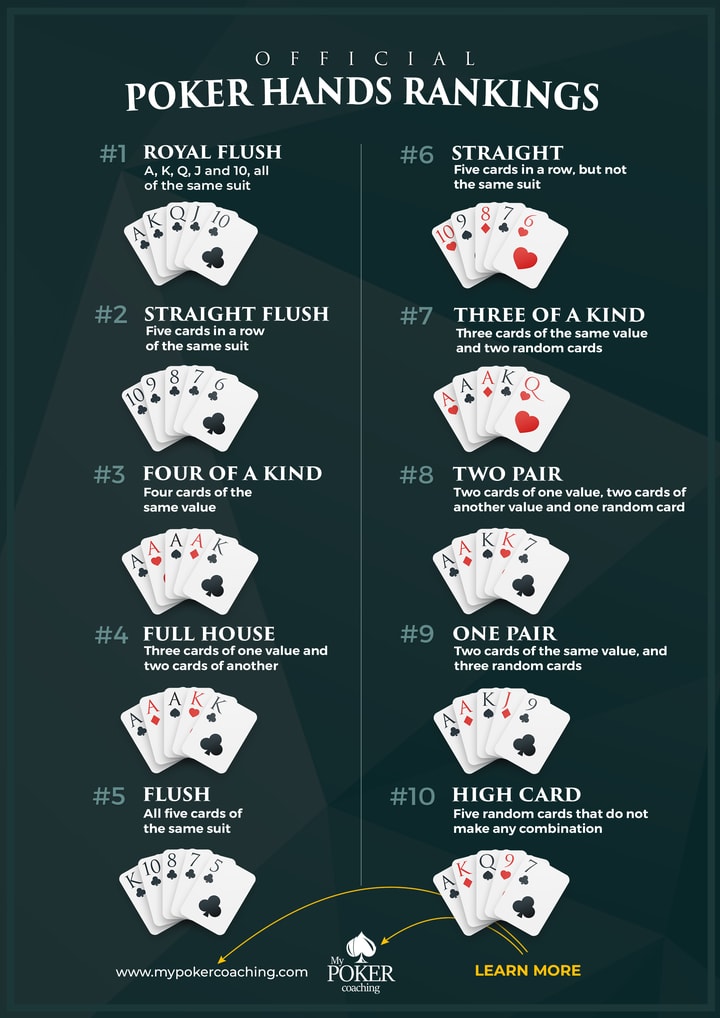
Download the full-resolution poker hands cheat sheet for later use!
This is a full rundown of all the five-card hands you can make in poker and a short description of how to make each one, from best to worst:
- Royal Flush: Five highest-ranked consecutive cards of any suit – Ah Kh Qh Jh Th
- Straight Flush: Five consecutive cards of any suit – 8s 7s 6s 5s 4s
- Four of a Kind (Quads): Four cards of the same ranking – Js Jh Jd Jc Ah
- Full House: Three of a Kind + One Pair – Qh Qs Qd 7s 7h
- Flush: Five cards of various rankings but the same suit – Ac Jc 8c 3c 2c
- Straight: Five consecutive cards of various suits – Ts 9h 8c 7d 6s
- Three of a Kind: Three cards of the same ranking + two unpaired cards – 6s 6d 6c Jh 4d
- Two Pair: Two pairs of came ranking cards – Kd Ks 8h 8s 5d
- One Pair: Two cards of the same ranking – Ac Ad 9s 6h 2c
- High Card: Five non-consecutive cards of various ranks and suits – Ks Qh 8s 5d 3c
Printable Poker Hands Cheat Sheet – Why Should You Use It?
There is no better way to learn Texas Holdem's basics than to grab a printable poker hands cheat sheet. As the name suggests, you can print it or have it on your phone and access it whenever you need it.
If you are a bit more experienced player and want to learn the math part, you can get poker odds charts and probability tables to study the numbers.
This way, you will learn probabilities of hitting one hand or another, bluffing and calling odds, and other vital math numbers allowing you to make educated decisions instead of just guessing what to do.
Knowing all this information will prevent you from making massive mistakes, playing unnecessary hands, or even calling with a draw when you should not do that. So you can be one step ahead of most of your opponents even when just starting to play.
When You Should Deviate From These Poker Cheat Sheets
These charts are made from the theoretical point of view and are designed to prevent you from making mistakes and losing money, no matter who you play.
If you are not familiar with the GTO (game theory optimal) concept, you should read an article about GTO poker strategy vs. exploitative play to see the full picture.
The most important takeaway from that article is that you should use a balanced strategy whenever you play in a tough game or are up against unknown players.
However, if you have exceptionally weak and passive players at your table, you can deviate from these charts and play more hands.
- If you are up against tight and passive players, you should open more hands than in standard charts – These players are not likely to 3bet a lot as a bluff preflop or bluff multiple streets later on, so you will always know where you stand, and can make more money by playing extra hands.
- If you are up against very aggressive, loose, and solid players, you can open fewer hands – If your opponents are very loose, you can cut down the weakest part of your range, and they will level themselves, giving you the money by overplaying their holdings. This way, you will have a huge range advantage by having more strong hands than them.
Just don’t forget that a poker cheat sheet should be used as your starting point to prevent massive mistakes, but you should always be looking to adjust these strategies against different players to maximize your EV and increase the win rate.
I made these poker hand cheat sheets after analyzing millions of hands from winning regulars along with the help of dedicated solving software, so you can’t go wrong with it.
Poker Starting Hands Cheat Sheet – Pick Wisely
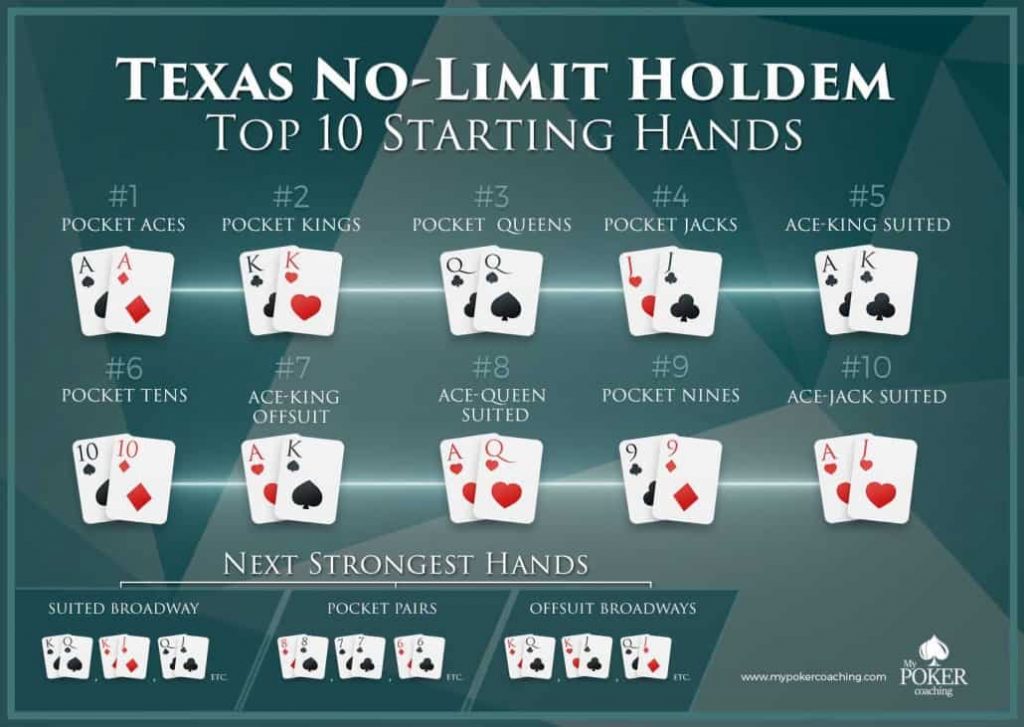
Download the full-resolution picture for later use!
Picking the right starting hands to play is a big part of any successful poker strategy. All poker hands start before the flop, and playing the right hands on this street will lead to success across all of them.
These are the most important and notable poker hands you need to remember, along with their popular nicknames that you could hear other players refer to them as:
- AA (American Airlines, Pocket Rockets): The best hand in Texas Hold’em Poker, Pocket Aces are an absolute powerhouse that you never want to fold before the flop. If given the option, always get it all-in with the Aces!
- KK (Cowboys): Pocket Kings are the second strongest poker hand. This powerful pocket pair will make you heaps of money, but remember to always play it aggressively before the flop.
- AK (Big Slick, Anna Kurnikova): An Ace and a King is a powerful combination in poker, but a hand you should not necessarily get married to or put all the chips into the pot with. Consider all the factors at play before proceeding with your AK.
- QQ (Ladies): A pair of Queens is a powerful hand in almost every scenario, but a hand that can often be forced into coin flips with AK. Don’t expect miracles from your Ladies, but don’t get rid of them too fast either.
- JJ (Fishooks, Jiggities): Pocket Jacks are a hand that often gets players into trouble, but a very strong pocket pair nonetheless, and one that still stands well within the top ten hands in all of poker.
- AQ (Anthony and Cleopatra): Looking down at these two high cards, especially of the same suit, will always be good news. Be careful not to overplay your AQ, but get ready to bet all the chips, especially on shorter tournament stacks.
- TT (Dimes): A pair of Tens is definitely not a hand you want to stack off with too often, but is one that will make you a lot of money once you learn when and how to play it all the way.
- 99 (Phil Hellmuth): A hand that made Phil Hellmuth the world champion back in 1989, pocket Nines is one of the weakest hands you can consider somewhat of a powerhouse in the game of Texas Hold’em Poker.
Read the full articles and learn more about the Best Starting Hands in Poker.
Poker Positions Cheat Sheet – Navigate It For The Best Results
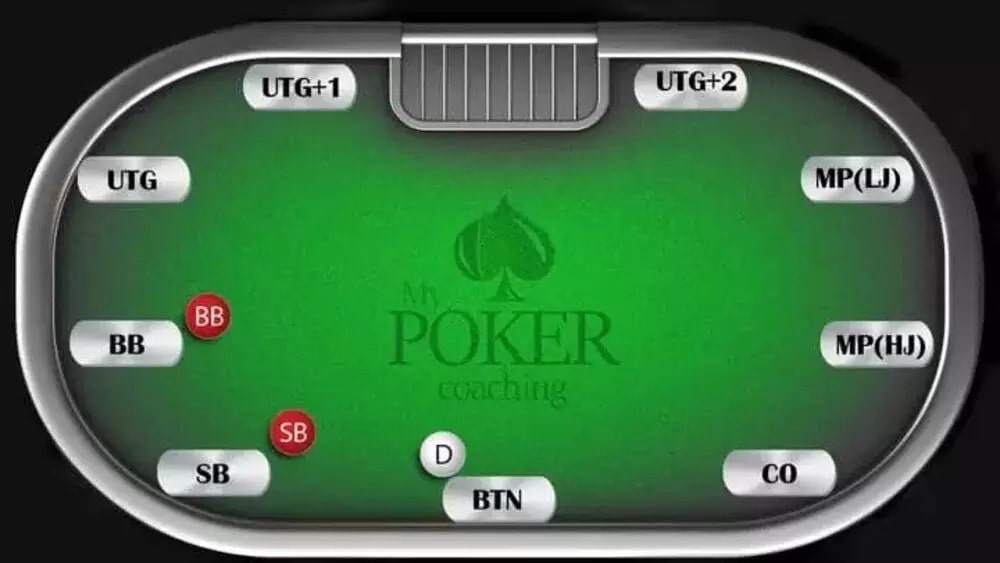
The importance of position in poker cannot be overstated, as it impacts every part of a poker hand and helps you realize your equity.
Learning how to play your hands in different poker positions is of key importance, which is why we added a detailed look at every poker position to our poker cheat sheet.
Keep reading and find out what each position at the poker table is, how to play it, and how it compares to other poker positions.
- Under The Gun (UTG)
- Under the Gun +1 (UTG1)
- Under the Gun +2 (UTG2)
- Middle Position 1 (MP1) or Lo-Jack (LJ)
- Middle Position 2 (MP2) or Hijack (HJ)
- Cutoff (CO)
- Button (BTN)
- Small Blind (SB)
- Big Blind (BB)
⭐ Under the Gun (UTG)
The first position to the left of the big blind, UTG, is one of the least favorable positions to be seated in, as it puts you at a significant disadvantage against most of the table.
If you want to play good poker from UTG, you will be forced to play most hands and only play a tight range of hands, always coming in for a raise when you do decide to play.
Playing anything more than 15% of total hands from UTG is usually a mistake, although you can consider expanding your range slightly at a very nitty table.
In either case, remember that having eight other players to act after you means you will rarely win the blinds outright and will often face at least one further raise.
⭐ Under the Gun +1 (UTG1)
UTG1 is the next position to the left of the blinds and one that’s very similar to UTG in that it puts you at a positional disadvantage against most of the table.
Playing from UTG1, you will want to keep playing fairly tight and only enter pots when you have a big hand, being the first one to raise the stakes.
While you can add a few extra hands to your opening range from UTG1, make sure not to go too crazy, and don’t try to steal the blinds or get too aggressive from this position.
⭐ Under the Gun +2 (UTG2)
As we move further around the table, we get to UTG2, another early position that warrants fairly tight and careful play.
Being in UTG2 means you are getting closer to the middle position and that you can start to open your range up, but still only playing strong hands like suited Aces and suited Broadway cards while folding all off-suit hands and smaller suited connectors.
⭐ Middle Position, Lojack (MP, LJ)
Often referred to as Lojack by the younger generation of players, the Middle Position stands between the early positions and late ones and allows you to finally get a little more aggressive.
You should still not be opening much more than 20% of all hands from this position, but depending on how aggressively your table is playing, off-suit Broadways and some extra suited connectors can come into play.
Still, refrain from making too many steal attempts or raising it up with hands like off-suit connectors or trashy suited hands that don’t make for good opening candidates from the Lojack.
⭐ Hijack (HJ)
Hijack is the first actual stealing position at the poker table. With only four players to act after you, HJ allows you to start thinking about stealing the blinds and significantly expanding your opening range.
When considering your game plan in Hijack, you should carefully consider the two players who have a position on you and how likely they are to play back at you.
If the CU and D are not very aggressive players, you can get away with opening with a fairly wide range to steal the blinds.
Hijack is also a position in which you can consider 3-bet re-steals against earlier position opens, although you should always keep in mind that early position openers tend to have a strong range themselves.
⭐ Cutoff (CO)
The Cutoff is one of the best positions at the poker table, as you only need to knock one player out of the hand in order to establish an absolute position.
Raising over 30% of all hands from CU is pretty common, with some more aggressive players opening even wider, especially if the Button is not a particularly aggressive player.
Re-stealing from the Cutoff is also often possible, as 3-betting against MP or HJ opens can be a very effective way to get the Dealer to fold and either win the pot or play a 3-bet pot heads-up in position.
⭐ Button (BTN)
Having that magical dealer button on the felt in front of you is the best thing that can happen before a poker hand starts, as the Button is the absolute best position at the table.
Being the Button ensures you will have a position over all other players if you go to a flop, which allows you to play a very wide range, steal and re-steal often, and over-realize your equity in all cases.
The button is the most profitable position at the poker table, regardless of your poker strategy, which is why you should be looking to play as many hands as possible from this position.
When playing from the Dealer button, remember to remain aggressive, try to get more chips in the pot with your big hands, and give yourself the most opportunities to bluff your opponents out of the pot as much as possible.
⭐ Small Blind (SB)
Just as Dealer is the best position at the table, the Small Blind is the absolute worst, as it ensures you always go first on every betting street from the Flop onwards.
Being out of position in Texas Hold’em means you don’t get to play hands on your own conditions, and that means you should tighten up and play fairly straightforwardly.
Even more than in other positions, you want to play your hands aggressively from the Small Blind, as winning the pot before the flop is a big win even with a hand like AK or AQ, making a 3-bet an optimal play to a call in the vast majority of cases.
⭐ Big Blind (BB)
Being the Big Blind can put you in quite a few interesting spots. On the one hand, it means you will be playing the hand out of position against all players but one. On the other, you are getting a discount on calling any raises before the flop.
Playing with deep stacks, you will want to defend your big blind a lot against small raises, with the most suited hands and many off-suit ones good enough to see a flop with a reduced price and amazing odds you are getting.
At shallower stacks, defending many hands by calling will not be the best idea, which is where re-shove charts come into play. Learn which hands you can profitably 3-bet shove against late position raises from the big blind, and you will see your tournament results skyrocket almost instantly.
Poker Odds Cheat Sheet
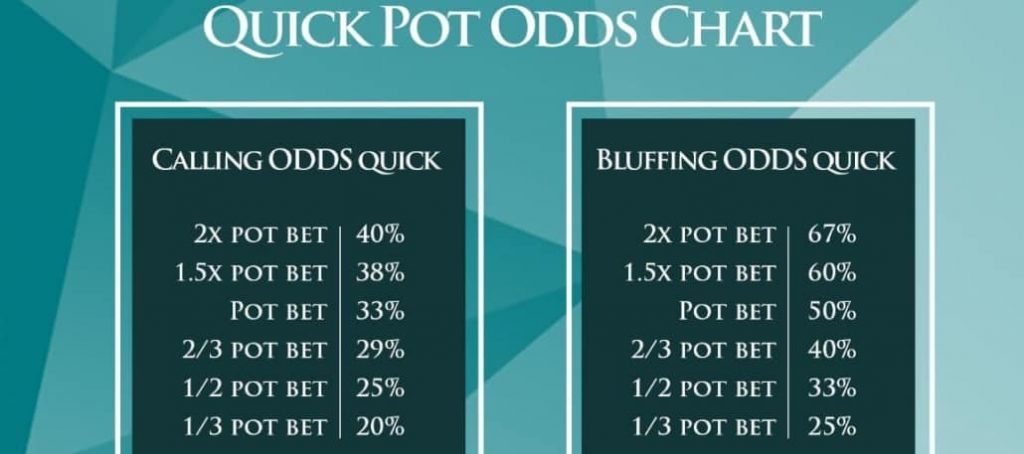
Download the full-resolution picture!
Many new players have an illusion that they will always have a strong hand, while in reality, you are likely to miss the flop most of the time.
It is essential to understand poker probabilities when you start out and always consider this when thinking about your opponent's holdings because they are also likely to miss. To illustrate this, I am giving you the odds of improving your hand on the flop:
| YOUR HAND ON THE FLOP | Your probability of flopping the hand |
| Full house (when holding a pocket pair) | 0.73% |
| A flush (when holding two suited hands) | 0.73% |
| Straight (when holding two connected cards) | 1.3% |
| Two pairs (when holding non-pair hole cards) | 2% |
| Set (when holding a pocket pair) | 11.8% |
| One pair or better (when holding who non-pair cards) | 32.3% |
Of course, that is just a small part of all the information, and it is not enough to know that. Recently, I wrote a detailed article about poker odds, outs, and math, so make sure to check it out for more information.
However, one thing that I want to share in the form of a poker odds cheat sheet is the table with calling and bluffing odds.
| Calling Odds | Bluffing Odds |
| 2x Pot Bet – Need 40% Equity | 2x Pot Bet – Need 67% Equity |
| 1.5x Pot Bet – Need 38% Equity | 1.5x Pot Bet – Need 60% Equity |
| Pot Bet – Need 33% Equity | Pot Bet – Need 50% Equity |
| 2/3 Pot Bet – Need 29% Equity | 2/3 Pot Bet – Need 40% Equity |
| 1/2 Pot Bet – Need 25% Equity | 1/2 Pot Bet – Need 33% Equity |
| 1/3 Pot Bet – Need 20% Equity | 1/3 Pot Bet – Need 25% Equity |
You can see how many times you have to win when calling a bet from your opponent to make calling profitable. Likewise, the bluffing part shows how many times your opponent must fold to make your bluffs profitable. (important information for choosing bet sizing)
It can be hard to get a hold of all these numbers while in the middle of the battle, so you should study poker odds cheat sheet away from the table to learn all the essentials.
All these numbers can be a good starting point, so have it at hand or even print it out until
Poker Strategy Cheat Sheet – Betting Streets Explained
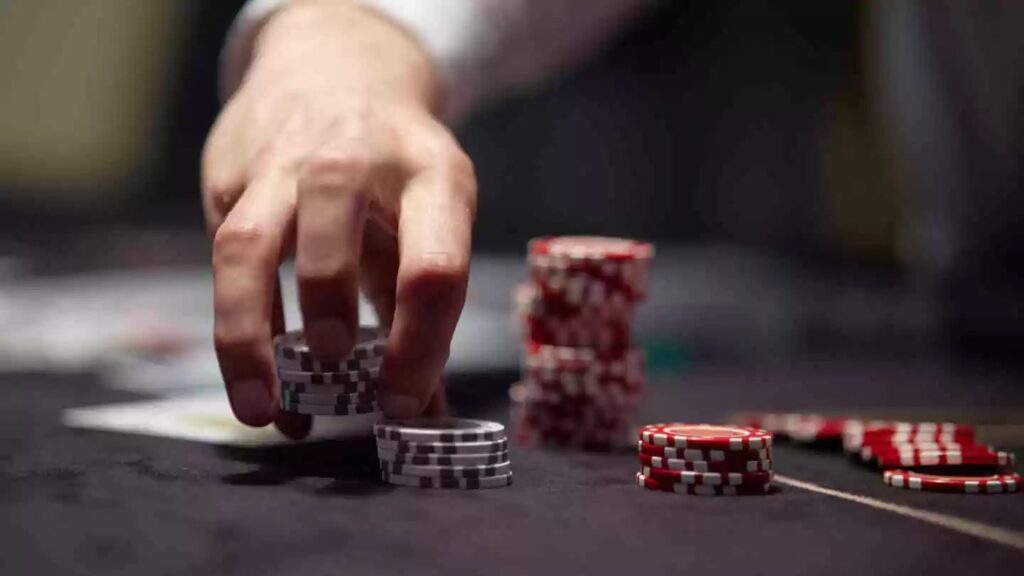
Every hand of poker is made up of several betting streets, and knowing how to play each betting street properly is essential to your poker success.
To help you get there, we are going to walk you through each betting street, one at a time, giving you the key tips to playing each step of the way.
Keep this poker strategy cheat sheet handy the next time you play poker in case you need a quick reminder, and do your best to memorize the key takeaways to make sure you act fast and accurately in every situation.
Preflop Strategy Poker Cheat Sheet
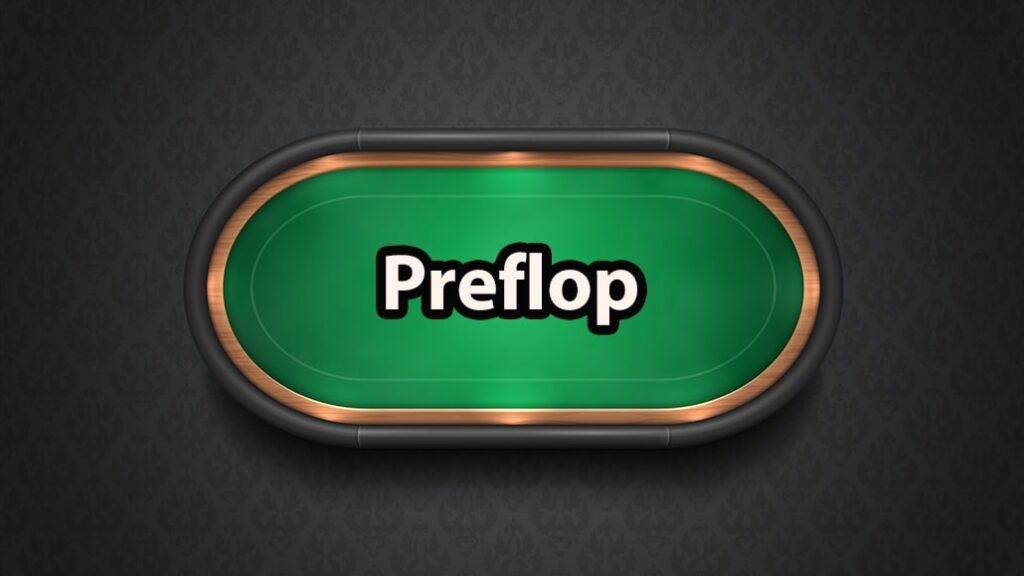
The first betting street commences as soon as the first hole cards are dealt and before any community cards are in play. While it may seem like not a very significant one, the preflop betting street is the basis for everything you do in a poker hand, which makes preflop play an essential part of any poker strategy.
To get started, make sure to download our preflop hand rankings sheet, which will help you decide which hands to play from each position before the flop, both in unopened pots and when facing a raise from an earlier position player.
Getting comfortable with raising ranges and 3-betting ranges before the flop will help make your preflop decisions easier and allow you to move to further betting streets with a well-balanced and strong hand range.
However, before you start relying on the preflop cheat sheets too much, remember that you will want to deviate from the opening and 3-betting ranges against different types of opponents, stealing more from the tight players and playing for value more against the loose ones.
Flop Strategy Poker Cheat Sheet
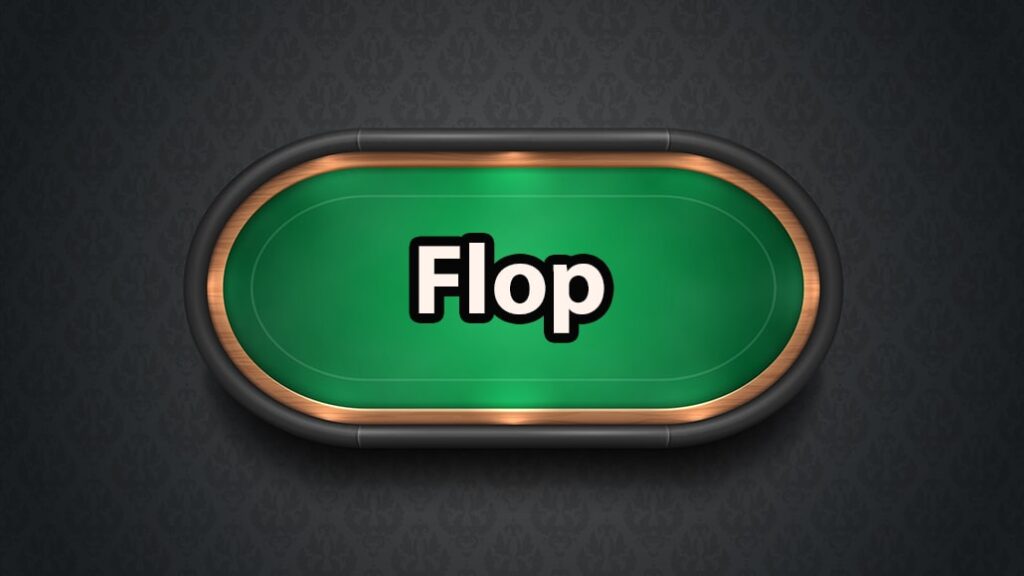
The flop betting round is the first one with community cards available, and a strong flop poker strategy will make your overall game a lot stronger.
If you followed our strategy tips for preflop play, you will arrive at most flops as the aggressor, giving you a chance to build on that aggression and win a lot of pots outright without much resistance.
One of the most powerful plays to utilize on the flop is the continuation bet (c-bet), which builds upon the preflop aggression and aims to win the pot by making a flop bet.
The size of the bet and the part of your preflop range that you want to c-bet with will depend significantly on the board texture, the position of the player who defended, and your own position and preflop play.
Keep the following tips in mind when considering whether or not to c-bet on the flop and how big to make your c-bets:
- C-bet your entire range on static flops (like Qs3d3c) and use a small sizing when doing so.
- C-bet a smaller percentage of your range on dynamic flops (like Jc9c8h) and use a large sizing when doing so.
- Use a polarized c-betting range made up of good bluffing hands and your strongest hands when making big flop bets.
Another important flop play to remember is the check-raise, which you can employ when you are playing as either the aggressor or the defender out of position.
After checking the flop out of position and facing a c-bet, raise a range made up of your strongest hands and strong bluffing hands in order to balance your range and ensure you don’t reveal the content of your hand by employing this play.
Turn Strategy Poker Cheat Sheet
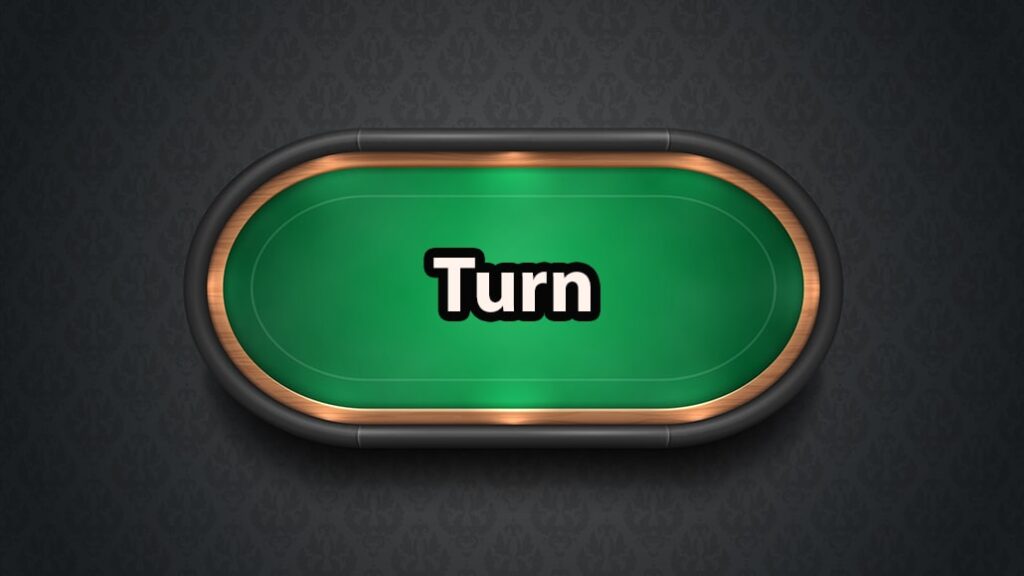
The next betting round comes after the turn card is dealt. By the time you reach the turn, the ranges are usually a lot more defined and clear, and most players are already eliminated from the hand.
At this point in time, you will want to continue playing aggressively if you were the aggressor preflop and on the flop, as continued aggression wins a lot of pots on this betting street.
Keep playing your strong hands for value and continue bluffing with hands that pick up additional equity and your strongest flop bluffs.
Remember to take the turn card into consideration and the way it interacts with your opponent’s range, as well as your perceived range, when considering whether or not to keep playing aggressively on the turn.
If you were the passive player on the flop, also consider how the turn card improves or downgrades the theoretical range of hands you should have without thinking too much about the exact two cards you are holding in the hole.
River Strategy Poker Cheat Sheet
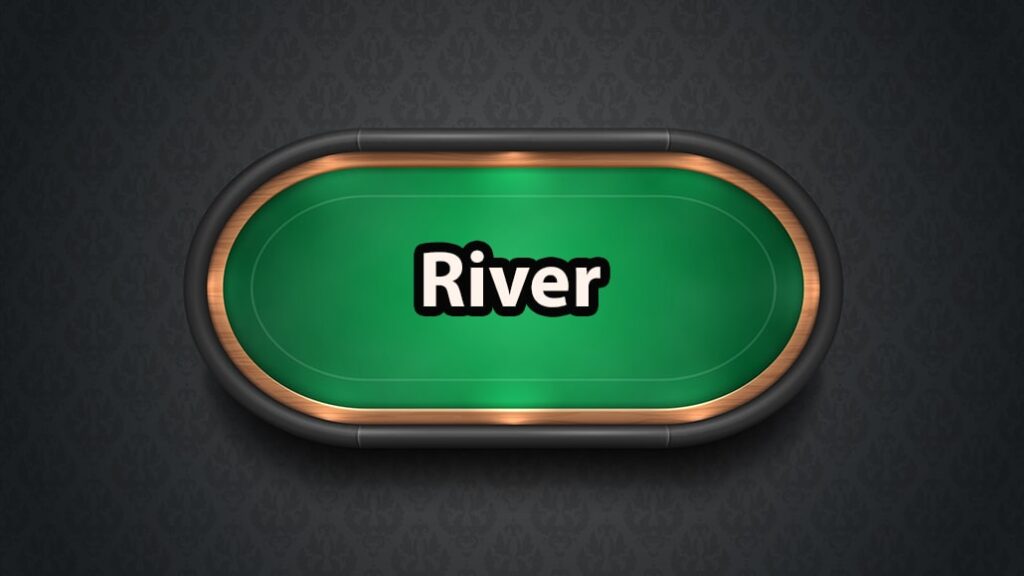
The river is the last of the betting streets, and the one where you will have the most overall information, as all community cards are dealt out, and you have had a chance to see player actions on multiple streets.
River decisions are incredibly important, as bets on this betting street are always the biggest, and the situations you get put into warrant a lot of consideration.
As you get to the river, remember to consider all the plays you have seen up to that point, try to narrow the ranges of your opponents, and make decisions in consideration of all the possible hands both you and your opponent can have.
Essential Tips: Do’s and Don’ts of Texas Hold’em Poker
You can spend years studying the game of poker and learning how to improve your game in different specific situations. However, there are some things that never really change and that all poker players should be aware of at all times.
These are the top seven poker tips you should do to instantly improve your poker results and take your game to the next level.
- Play in Position: While many novice players don’t understand it, position is a critical element of poker. Play as many hands as you can in position (last to act), and you will make your life easier and your results better almost instantaneously.
- Play Fewer Hands: Being selective with your starting hands is just as important as being in position. Get rid of your junky hands, and be patient before the flop if you want to be a winner in the long run.
- Be Aware of Stack Sizes: Another key thing players often neglect is the stack size. Always be aware of the effective stack size and know how many chips you stand to win or lose as soon as you enter a pot, as this gives you the ability to plan ahead and play each street in the best possible way.
- Steal the Blinds and Antes: Winning a big pot is always fun, but it’s the small pots that add up and make the difference. Take all the opportunities you can to win small pots and steal the blinds and antes as often as you can to keep your stack growing and
- Be More Aggressive: There are so many spots in poker where the more aggressive player wins the pot without much resistance. Being aggressive beats being passive in poker nine times out of ten, so keep that in mind the next time you want to take a passive line instead of an aggressive one.
- Play in Soft Games: If you are the eighth-best player in the world and playing against the other seven, you will be losing! Find soft games with weaker opponents you can beat and play them as often as you can if you want to maximize your hourly win rate and win very consistently at poker.
- Study the Game: While it’s definitely a long-term tip and one that won’t print you any money this instant, studying poker on a regular basis will increase your win rate and make you a better player in the long run. Keep on studying, and you will only see your results get better and better.
Now that you know what to do at the poker tables, it’s important to also note the things you should try to avoid at all costs.
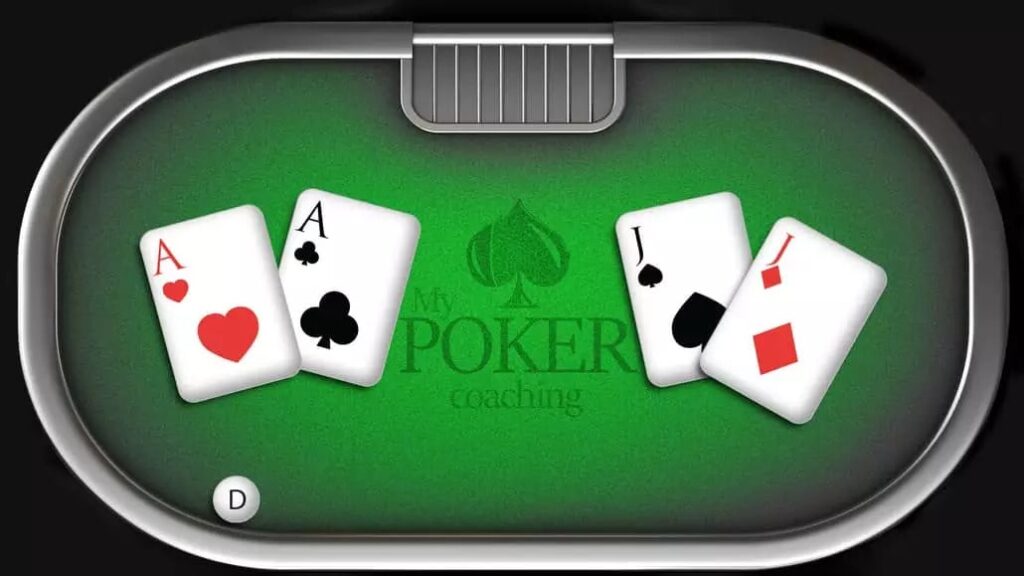
Our poker cheat sheet continues with the seven things you should never do at poker if you want to succeed:
- Don’t Bluff Too Much: Bluffing whenever you don’t have a hand can seem appealing, but in order to succeed at poker, you have to balance your ranges and can’t go around bluffing every hand. Don’t be afraid to bluff when it makes sense, but also remember that you can’t win every pot.
- Don’t Generalize: Playing a semblance of a GTO strategy is very popular these days, but knowing your opponent remains as important as ever. Don’t make general conclusions. Make sure to remember who you are playing against, and adjust your decisions to your opponent.
- Don’t Act Too Fast: Whatever anyone might tell you at the poker table, there is no reason to act on your hand instantly. When the action is on you, take some time to consider your decision and only act when you believe you are doing the right thing. Anyone who doesn’t like it can call time!
- Don’t Play Above Your Means: There is nothing worse than playing too high and being forced to make bad decisions because of financial pressure. Never play on scared money, and always have a proper bankroll for the games you are playing if you want to succeed.
- Don’t Call in the Small Blind Too Often: The small blind is the worst position at the table as it forces you to act first on every betting street. While it’s OK sometimes, calling in the SB should generally be avoided. Fold your hand or 3-bet to give yourself a chance to win outright!
- Don’t Give Up: A chip and a chair are all you need to still be in a game of poker, so don’t give up until it’s all gone. As long as you are sitting at the table and have any chips in front of you, do your best to play the best poker you possibly can.
- Don’t Be a Hero: The feeling of turning over your Jack-high and winning the pot against a bluff might be a great one, but it’s also extremely costly. Hero calls are not a part of the winning poker strategy too often, so avoid making them very often.
Poker Terminology Cheat Sheet: Key Terms and Phrases

If you are new to poker, it is important to learn all the key terms and phrases used in the game that will help you understand what is happening at the tables.
If you have ever had trouble understanding what the dealer is saying at the tables or what other players are discussing among themselves, here is a quick list of important poker terms to remember the next time you play:
- Bet: When not facing previous action, you are allowed to make a bet of any size, up to the size of your entire stack, in no-limit poker games.
- Call: You match the size of the current bet on any betting street to keep your hand active, allowing you a chance to win the pot.
- Check: You pass the action to the next player at the table without making any bets.
- Fold: When facing a bet or a raise, you can throw your cards away and are not obligated to put any chips into the pot if you do. You cannot win the pot once you have folded.
- Raise: When facing an existing bet or a raise, you increase the size of the bet. Any raise must at least double the existing bet or match the size of the previous raise.
- All-In: When you put all your chips into the pot, you are declared all-in! You don’t have further action, but your hand will go to showdown and compete for the main pot in every scenario.
- Preflop: The first round in the game is when each player receives their two hole cards and acts based only on their holdings.
- Flop: The first round of community cards dealt across the table. The flop is made up of three community cards in total.
- Turn: The fourth community card, dealt after flop betting is completed.
- River: The fifth and final community card, dealt after turn betting is completed.
- Showdown: After all betting is completed, the dealer announces the showdown. All active players must turn over their cards, and the dealer determines the winner.
- Ante: A forced bet, usually used in poker tournaments, designed to drive the action. Ante bet can be played by every player at the table or by one player for the entire table.
- Big Blind: A forced bet paid by the player two seats left of the dealer button. The size of the big blind determines the minimum price one must call in the preflop betting round.
- Dealer: This can refer to the person dealing the cards, but more often refers to the player seated in the “dealer” position at the table. The dealer is marked by the big button with the letter D on it, which moves around the table with each hand.
If you want to learn more terms, make sure to check our full poker terms glossary.
Additional Poker Cheat Sheets To Remember – Master Other Games
While Texas Hold’em is by far the most popular poker variation in the world, there are different poker types to master and specific segments where a proper poker cheat sheet can go a long way.
From PLO poker to Short Deck, live games, and even 3-bet pots, we have some free cheat sheets for you!
Poker Cheat Sheet For Live Games
Moving forward, we can also touch the live games. Of course, live poker is different than online games, so naturally, you need to adjust your play accordingly.
Most likely, you are going to face weaker players, who limp more often, miss value bets, or are too passive.
All of this is great news for you if you know how to adjust, so few things you should instantly do:
- Avoid open limping – you can over-limp if someone has already entered the pot by calling, but limping first is not a winning strategy and should be removed from your live games.
- Take advantage of bet sizing – many live players do not understand sizing too well, and they react poorly to those adjustments. Therefore, you can take an exploitative line to bet smaller when bluffing and bigger for value. This way, you will save money when your bluff gets caught and win more when you have the hand. (of course, good players will pick up this strategy, so it should only be used against weak players)
- 3-bet more often versus recreational players – almost no one 4-bet as a bluff in live games, so you can easily 3-bet more and get away with this play. On top of that, many will be over-folding or over-calling versus your 3-bets, so either way, making a mistake will yield you more money. Plus, you will take down a lot of pots with a simple c-bet, so why not take advantage of that?
- Do not try to play balanced – you will not get away from learning GTO if you want solid results, but this should not be your main strategy in live games. Live players tend to bluff less often, especially on the river, so overfolding when facing big aggression is going to be a profitable adjustment in most cases.
Of course, all of this is just guidelines, and you should always change your strategy versus different players. That being said, these adjustments can help you make more money in live games, and that is a good thing.
To get a few more tips, take advantage of the live games poker cheat sheet, and be prepared next time you sit down at the table.
Poker Cheat Sheet For Pot Limit Omaha
Not just Texas Holdem games have cheat sheets available. You can get one for PLO poker as well.
Since PLO is a game where you can find even more recreational players, understanding ground strategy can be enough to make solid money.
Pot Limit Omaha has quite a few differences from other games, and you should know a few things from the get-go:
- Equities run much closer – so most of the time, you should use bigger sizing to deny equity to your opponents.
- Hand selection is extremely important – you should not play hands that are not well-connected.
- You should 3-bet more often than you think – calling and trying to see a flop with every hand is not a winning strategy.
- You should not be c-betting a very high frequency out of position – since your opponent will have some equity a lot of the time, betting all your weak hands is not going to work.
- You should be hero-calling much less than in Holdem – people tend to bluff less in PLO, so this is an easy adjustment to make.
Like with everything in poker, it is hard to give general advice without analyzing the exact situation, but these tips can help you understand the basics of the game.
However, if you want to learn a bit more, make sure to grab this guide with great tips for both preflop and postflop play and make better decisions when playing.
Short Deck Holdem Poker Cheat Sheet
Short Deck Holdem is a similar game to No-Limit Texas in regard to the action. However, deuces through fives are removed from the deck, and it is played with only 36 cards.
This requires quite a few strategy adjustments if you want to see any kind of success. Before you ever decide to jump in this game, make sure to:
- Understand the rules and differences of this format
- Learn how to adjust your preflop ranges
- Change your approach to value betting, and do not slow-play as much as in Texas Holdem
If you want to see advanced strategies, you can always take a look at the Short Deck Course review and see all ins and out of this game.
With many players making huge mistakes in this game, there was never a better time to learn it.
3-Bet Pot Cheat Sheet For Texas Hold'em
There are many available resources for preflop play, but that couldn’t be said about postflop strategy. While it is not easy to summarize the best possible play in every situation, there are a few things you can take into consideration before making decisions.
- Think in terms of ranges, not hands – never try to put your opponent on an exact hand. Instead, give him a range of likely holdings.
- Evaluate who has the range advantage – if the board is better for your range, bet more often.
- Think about what you want to achieve with a bet – are you value betting, bluffing, or want to deny equity for your opponent?
Learning strategy will require some efforts, but you can always join one of the best poker training sites and save some time. However, today, I want to share a powerful poker cheat sheet for playing 3bet pots after seeing the flop.
Conclusion: Applying Poker Cheat Sheet in Play
Playing poker is about much more than just remembering a few simple tips, but having a few clear ideal in mind to use as the basis of your game will definitely help your game in a very real way.
Make sure to go over this poker cheat sheet before every poker session you play at the beginning, or keep it on your phone while you play, as it can help you resolve any dilemmas and organize your train of thought in-game.
We highly recommend remembering the basic tips we offer in this poker cheat sheet by heart or printing them out, as they will provide you with a basis for a sound and successful overall poker strategy.



